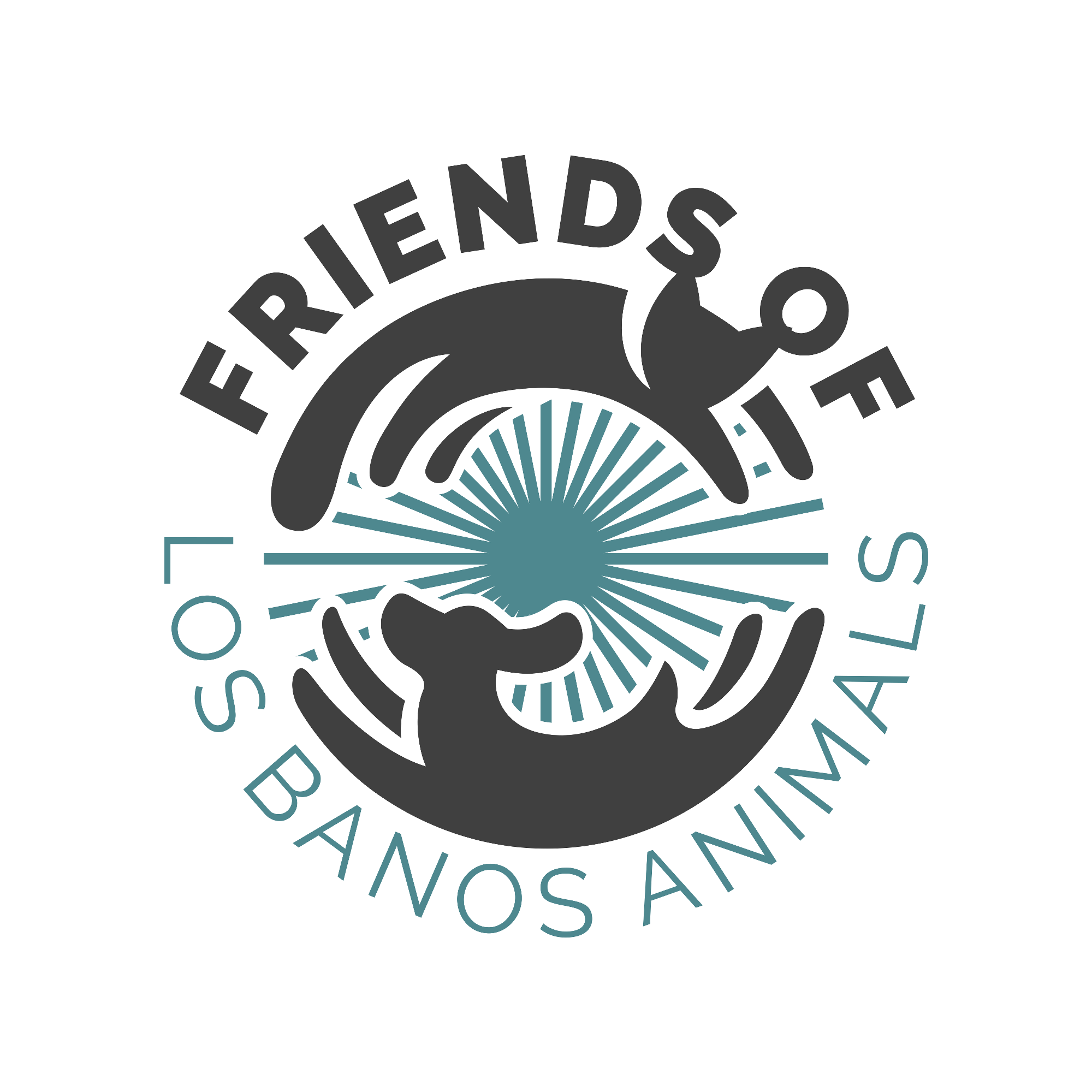FREE
Spay/Neuter Appointments for Los Banos Cats & Dogs
Brough to you by Feral Freedom's Los Banos Chapter - Friends of Los Banos Animals



Frequently Asked Questions
When should I spay/neuter my pet?
- Owned female dogs should be spayed before they are 5 months old.
- Owned small, medium and large breed male dogs should be neutered before they are 5 months old.
- Owned giant breed male dogs who are house pets should be neutered after growth stops, between 12 to 15 months of age due to orthopedic concerns.
- Owned giant breed male dogs who roam freely should be neutered before they are 5 months old due to the population concerns of unintended breeding.
My pet may be in heat, can she still get spayed?
Yes! She may have a slightly longer recovery but it is still safe for her to have surgery.
I have multiple dogs - can I sign up everyone?
Yes! There is no limit per household - please submit a separate application for each pet. We will do our best to book everyone on the same day.
What vaccines will my pet be given?
- Rabies 1yr
All dogs in California are required by law to be vaccinated against rabies once they reach 4 months of age, and either once a year or every 3 years. - DHPP
The DHPP vaccine is a combination vaccine that provides protection against canine distemper (D), infectious hepatitis/adenovirus (H) and parvovirus (P), as well as parainfluenza (P). Vaccines for distemper, infectious hepatitis and parvovirus fall under the ‘core’ category, which means that every dog should be given these, regardless of lifestyle or location.
DistemperCanine distemper is a highly contagious and potentially fatal viral disease that impacts the respiratory, gastrointestinal, dermatological and neurological systems. It is commonly spread through direct contact with an infected dog, as their respiratory secretions contain high concentrations of the virus. Symptoms of distemper include discharge from the eyes and nose, coughing, vomiting, diarrhea, hardened paw pads, fever and seizures. Unfortunately, there is no cure and treatment is largely supportive, with aims to control some of the symptoms and prevent secondary infection.
HepatitisInfectious canine hepatitis is caused by canine adenovirus which primarily targets the liver and the cells that line the inner surface of blood vessels. It is spread through urine and feces. Very severe forms of the disease can result in death within hours. Some symptoms of infectious hepatitis are fever, lethargy, anorexia, vomiting, diarrhea, enlarged lymph nodes, abdominal pain, bruises and jaundice (yellow discolouration of gums/whites of eyes). Like distemper, this can only be treated with supportive care.
ParvovirusParvovirus is another highly contagious and potentially fatal viral disease. It is most commonly seen in young dogs under 6 months old. Breeds that seem to be more susceptible include Doberman pinschers, Rottweilers, Labradors and German shepherd dogs. The virus attacks the intestines and bone marrow and is spread through feces and contaminated objects. The classic parvo signs are vomiting and foul-smelling bloody diarrhea. Other symptoms include fever, lethargy and anorexia. Again, treatment involves supportive care.
ParainfluenzaThis virus is one of several that contributes to kennel cough, which is a respiratory infection. It can spread rapidly through the air. Boarding kennels and shelters are places where dogs are more at risk. Some signs of parainfluenza are coughing, sneezing, discharge from the nose and lethargy. Some may recover within 2 to 3 weeks without treatment while others may need supportive care.
Does my dog have to get licensed to use this service?
Yes! It is required by the state of California and City Ordinance Los Banos, California Municipal Code Sec.6-1.3001 Dog License tag – Required
Every owner of a dog which is four months of age or older, and which is kept in the city, shall obtain and maintain a current dog license tag for such dog from the City and shall pay the license fee as imposed by resolution of the City Council. No person shall refuse to exhibit such a license when so directed by an Animal Control Officer, Public Safety, or Code Enforcement Officer. The owner shall obtain the initial dog license tag within thirty (30) days of the dog reaching four (4) months of age; or within thirty (30) days of owning/keeping/possessing a dog over the age of four (4) months.
How to Obtain a license
Dog owners may purchase a license for one, two, or three years at a time. Those who purchase a two or three year license will enjoy a slight cost savings. Rabies vaccinations are required before a license can be issued. Once obtained, dog owners can bring proof of vaccination and proof that the dog has been spayed or neutered to the Los Banos Police Department at 1111 G St. or to the Los Banos Animal Shelter at 1010 Airport Rd.
By using this service you will receive a FREE 1 year license
| Fee | 1yr | 2yr | 3yr |
|---|---|---|---|
| Spayed/Neutered | $10 | $20 | $30 |
| Unaltered | $50 | $85 | $115 |
Why should you spay/neuter your pet?
Your pet's health and longevity
The average lifespan of spayed and neutered cats and dogs is demonstrably longer than the lifespan of those not. A University of Georgia study, based on the medical records of more than 70,000 animal patients, found that the life expectancy of neutered male dogs was 13.8% longer and that of spayed female dogs was 26.3% longer. The average age of death of intact dogs was 7.9 years versus a significantly older 9.4 years for altered dogs.
Another study, conducted by Banfield Pet Hospitals on a database of 2.2 million dogs and 460,000 cats reflected similar findings, concluding that neutered male dogs lived 18% longer and spayed female dogs lived 23% longer. Spayed female cats in the study lived 39% longer and neutered male cats lived 62% longer.
The reduced lifespan of unaltered pets can, in part, be attributed to an increased urge to roam. Such roaming can expose them to fights with other animals, resulting in injuries and infections, trauma from vehicle strikes and other accidental mishaps.
A contributor to the increased longevity of altered pets is their reduced risk of certain types of cancers. Intact female cats and dogs have a greater chance of developing pyometra (a potentially fatal uterine infection) and uterine, mammary gland and other cancers of the reproductive system. Neutering male pets eliminates their risk of testicular cancer and eliminates the possibility of developing benign prostatic hyperplasia which can affect the ability to defecate.
Curb unwanted behaviors
Intact dogs are more prone to urine-marking than neutered dogs. Although urine-marking is usually associated with male dogs, females may do it too. Spaying or neutering your dog should reduce urine-marking and may even stop it altogether.
For cats, the urge to spray is extremely strong in those not altered, so the simplest solution is to alter by 5 months old before the problem arises. Neutering solves 90% of all marking issues, even in cats who have been doing it for a while. It can also minimize howling, the urge to roam and fighting with other males.
In both cats and dogs, the longer you wait, the greater the risk of the surgery not doing the trick because the animal has practiced the behavior for a longer period of time, thereby reinforcing the habit.
- Other behavioral problems that may be alleviated by spay/neuter include:
- Certain types of aggressive behavior.
- Roaming, especially when females are in heat.
- Excessive barking and mounting activity.
- In-heat behaviors such as yowling/vocalizing, rolling and demanding behaviors.
